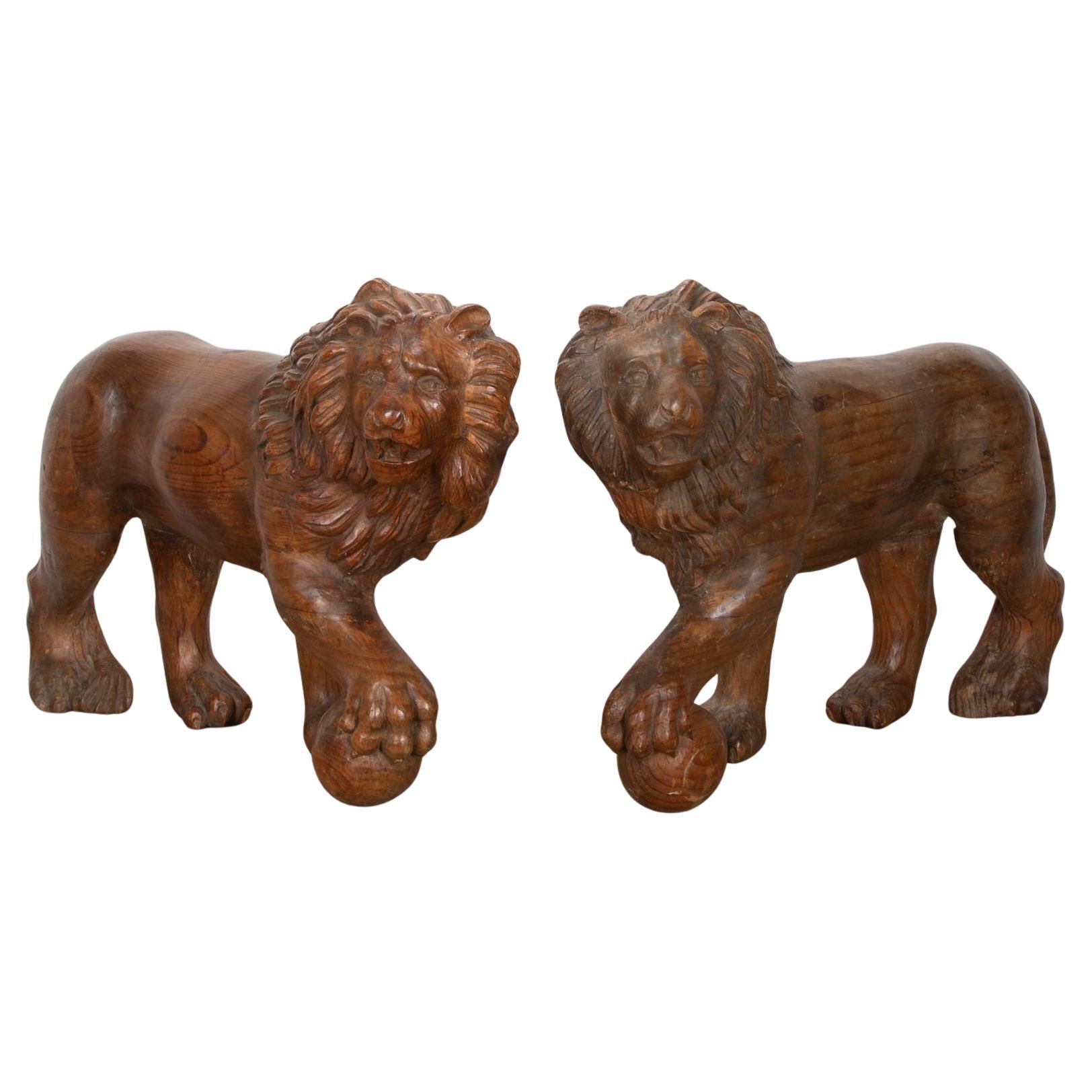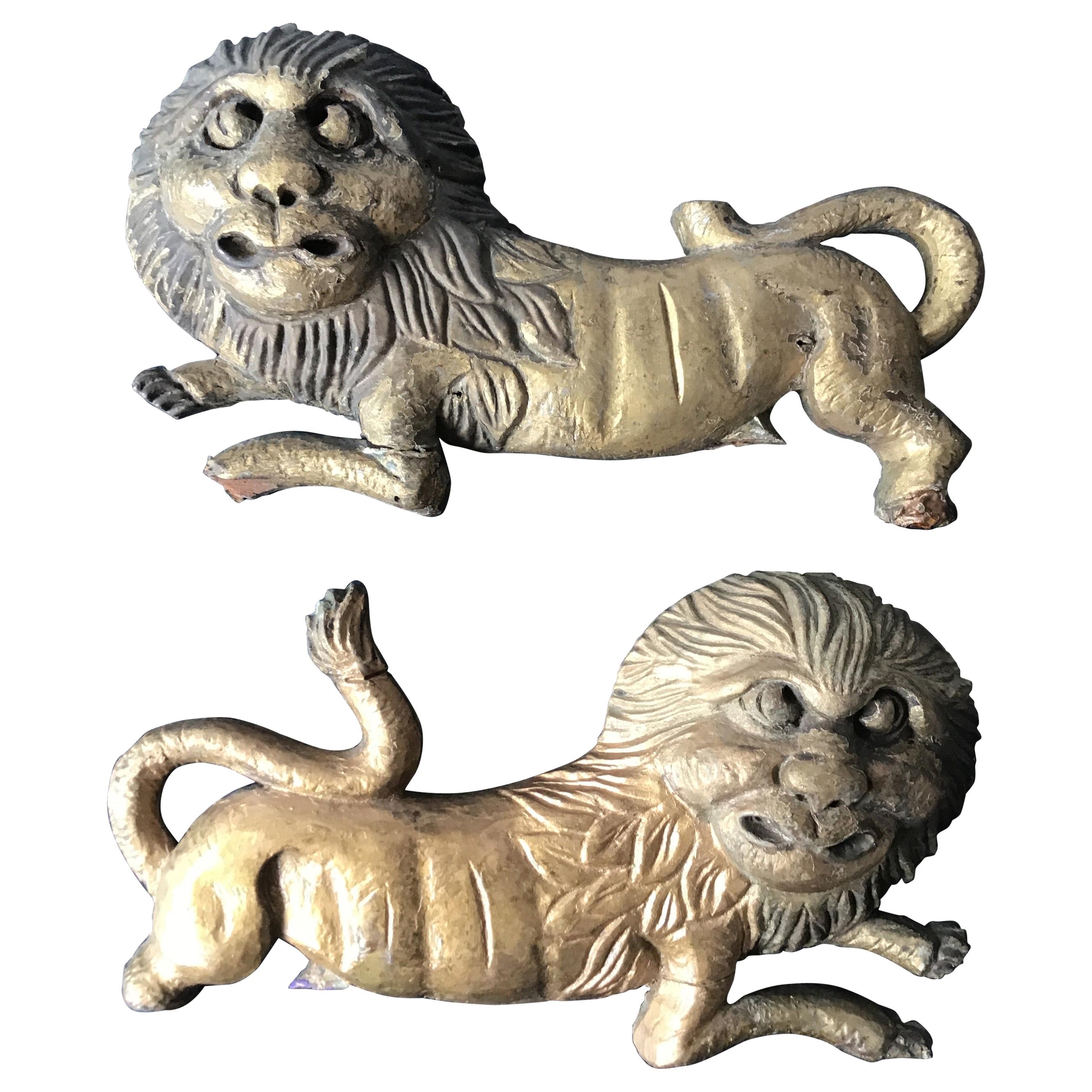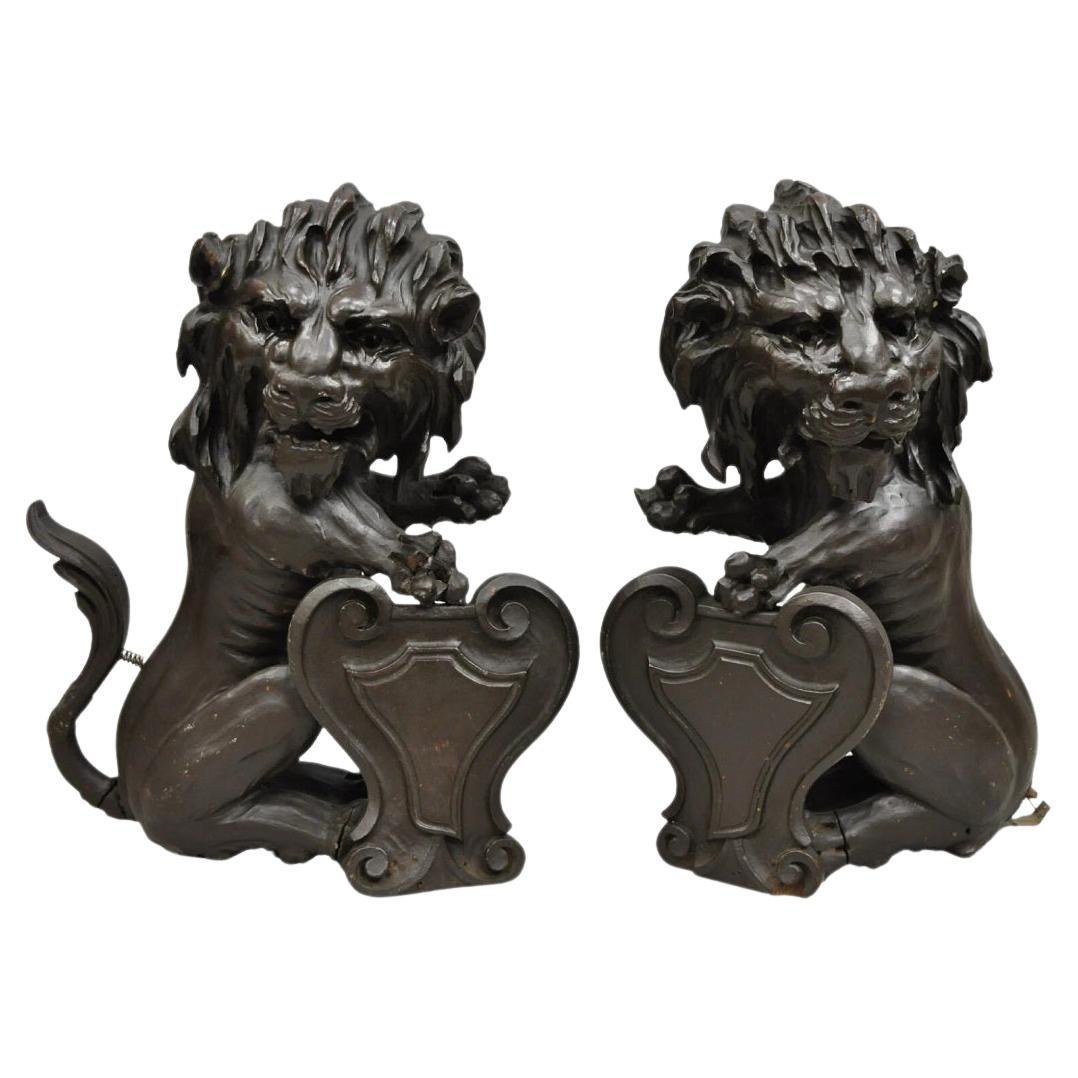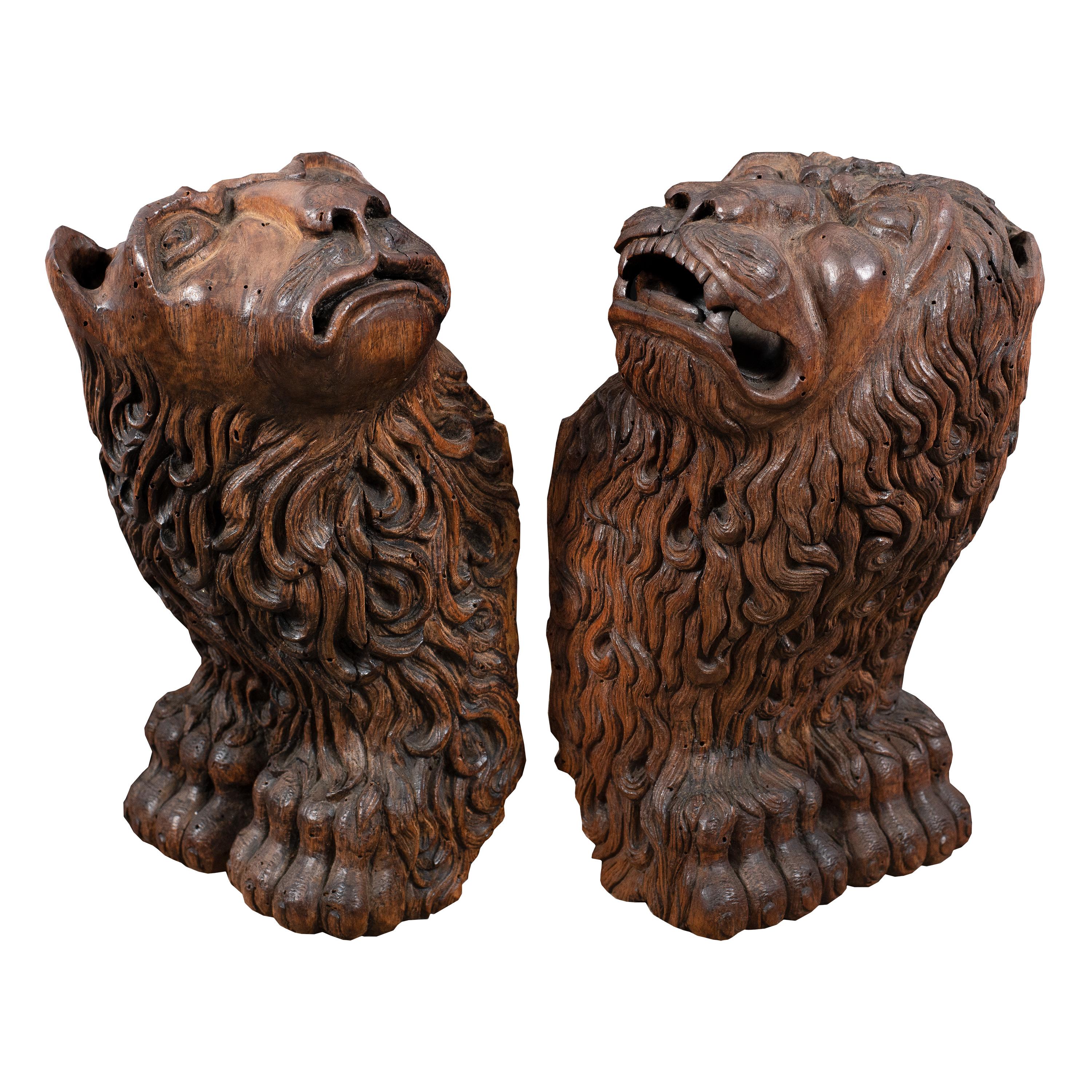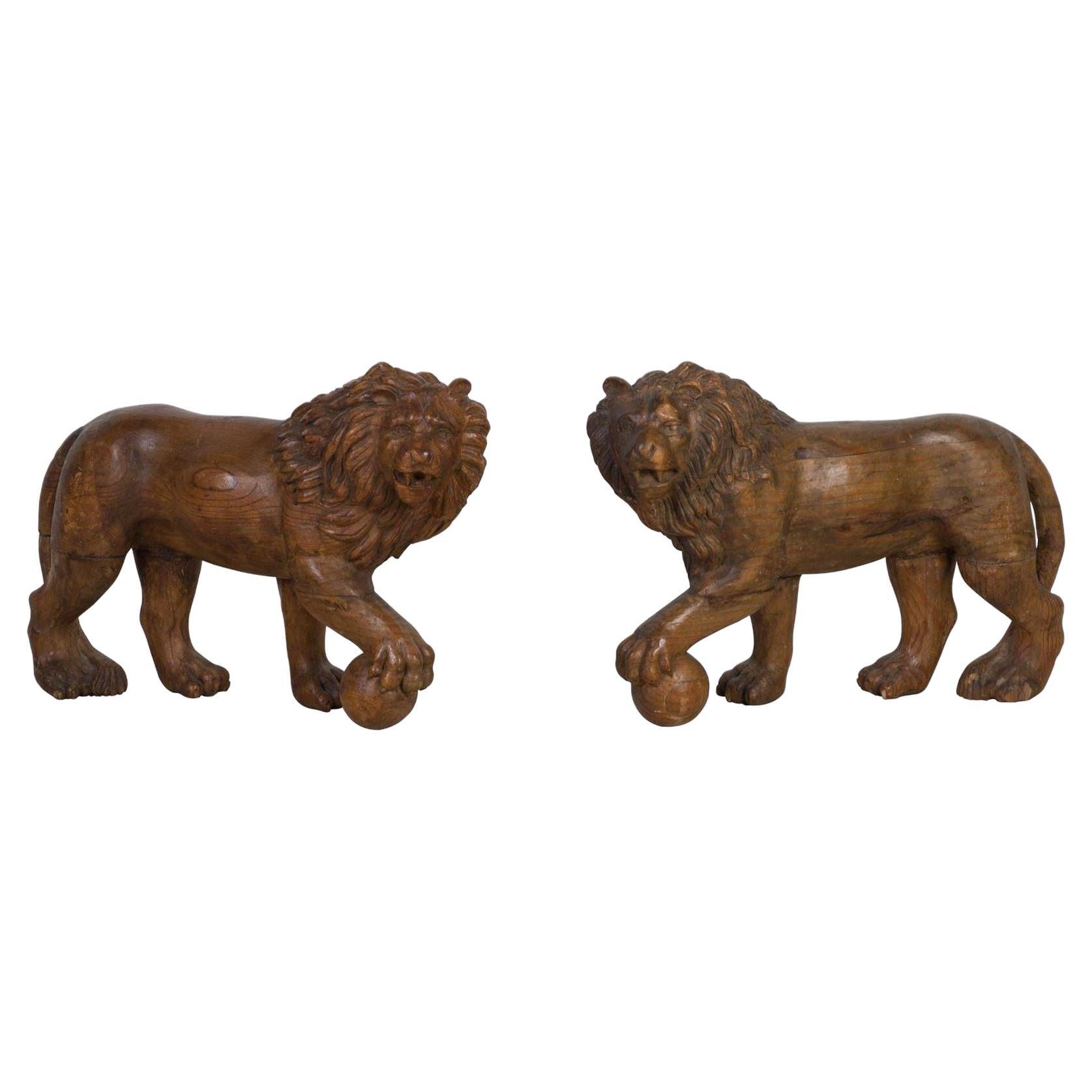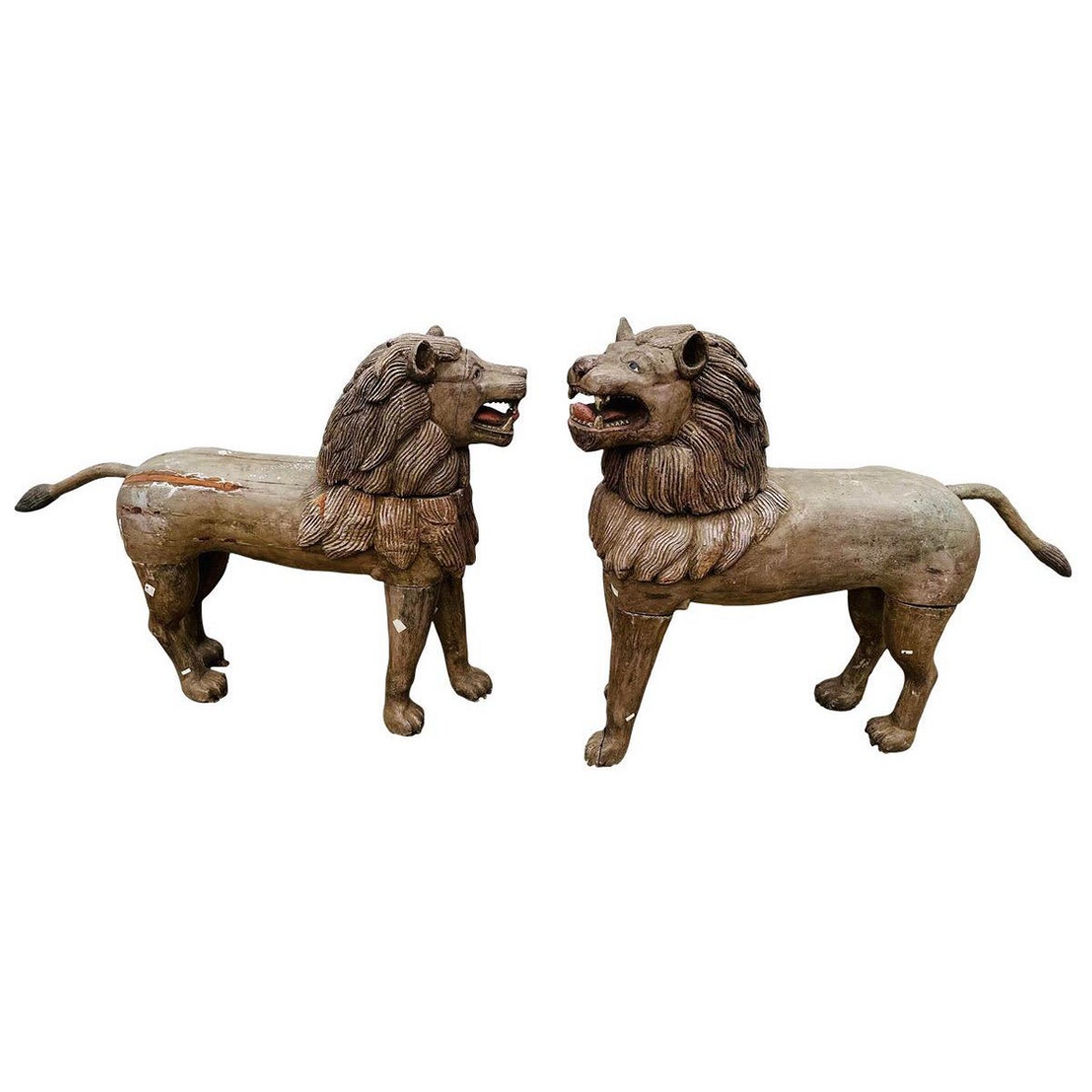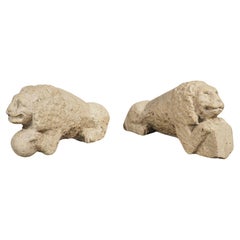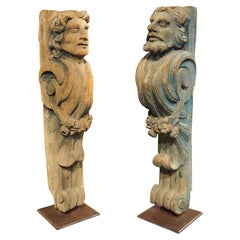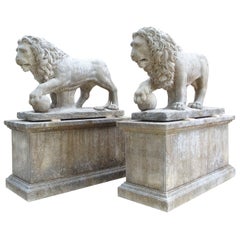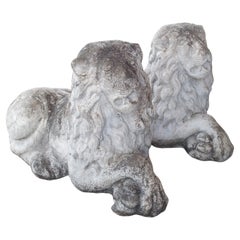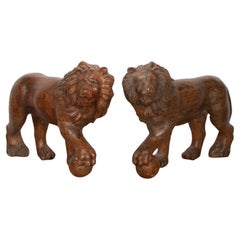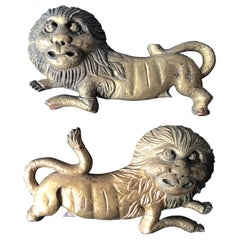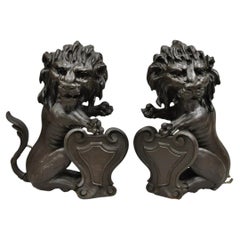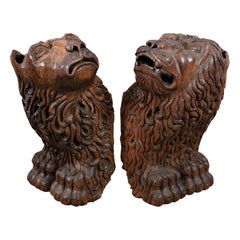Items Similar to Pair of 16th Century Italian Renaissance Carved Wooden Lion Supports
Want more images or videos?
Request additional images or videos from the seller
1 of 21
Pair of 16th Century Italian Renaissance Carved Wooden Lion Supports
$2,200per set
£1,671.08per set
€1,925.65per set
CA$3,098.14per set
A$3,434.75per set
CHF 1,805.10per set
MX$42,035.73per set
NOK 22,543.81per set
SEK 21,159.63per set
DKK 14,373.78per set
About the Item
Hand-carved in the 1500s, these Italian lion supports are the work of a master-level craftsman. It is possible that they were originally legs for a High Renaissance cassone. A fresh coat of French wax has accentuated the dark brown finish, allowing the nuances of the carvings to gain prominence. The smiling lions are very expressive, with a wry grin, exposing their sharp teeth, and attentive eyes. A pair of front paws emerge from the long flowing mane that covers the lion. Both lions have retained their rectangular attachment block, but most owners will prefer to use our carved Renaissance lions as sculptural art.
- Dimensions:Height: 15.5 in (39.37 cm)Width: 8 in (20.32 cm)Depth: 8.25 in (20.96 cm)
- Sold As:Set of 2
- Style:Renaissance (Of the Period)
- Materials and Techniques:
- Place of Origin:
- Period:
- Date of Manufacture:1500s
- Condition:Wear consistent with age and use. Minor losses. Good antique condition. Commensurate losses, not including small chips to the affixing blocks. Minor nicks and age separations. Light traces of old woodworm damage.
- Seller Location:Dallas, TX
- Reference Number:Seller: 424-112D1stDibs: LU906341882962
About the Seller
5.0
Platinum Seller
Premium sellers with a 4.7+ rating and 24-hour response times
Established in 1983
1stDibs seller since 2011
855 sales on 1stDibs
Typical response time: 1 hour
- ShippingRetrieving quote...Shipping from: Dallas, TX
- Return Policy
Authenticity Guarantee
In the unlikely event there’s an issue with an item’s authenticity, contact us within 1 year for a full refund. DetailsMoney-Back Guarantee
If your item is not as described, is damaged in transit, or does not arrive, contact us within 7 days for a full refund. Details24-Hour Cancellation
You have a 24-hour grace period in which to reconsider your purchase, with no questions asked.Vetted Professional Sellers
Our world-class sellers must adhere to strict standards for service and quality, maintaining the integrity of our listings.Price-Match Guarantee
If you find that a seller listed the same item for a lower price elsewhere, we’ll match it.Trusted Global Delivery
Our best-in-class carrier network provides specialized shipping options worldwide, including custom delivery.More From This Seller
View AllRare Pair of Antique Carved Stone Lions from Italy, Circa 1600
Located in Dallas, TX
These utterly captivating, hand-carved stone lions hail from Italy and date to circa 1600, possibly even earlier. Their regal couchant (lying down) posture adds an air of majestic charm to any setting. One lion gracefully rests its forepaws on a stone ball, while the other clutches a coat of arms shield. They are carved in the same stylistic manner as many of the medieval lions...
Category
Antique Early 17th Century Italian Medieval Animal Sculptures
Materials
Stone
Pair of 16th Century Carved Wooden Terms or Beam Supports from Northern Europe
Located in Dallas, TX
A fascinating bit of history, this pair of carved wooden terms dates to the High Renaissance during the 1500s. A term is a beam support in the form of a human head where the bust con...
Category
Antique 16th Century European Renaissance Busts
Materials
Metal, Iron
The Lions of Florence, Monumental Pair of Italian Carved Limestone Medici Lions
Located in Dallas, TX
The monumental size of this pair of hand-carved limestone lions is quite impressive, and their stature has been embellished by positioning them on classic, rectangular pedestals. Florence, Italy, is known for its artistic depictions of lions, ranging from the city’s coat of arms to the famous Marzocco lion that is currently part of Piazza della Signoria, and of course, the Medici lions, which inspired this pair.
Just like the original Medici, these lions mirror...
Category
21st Century and Contemporary Italian Neoclassical Animal Sculptures
Materials
Stone, Limestone
Pair of Recumbent Reconstituted Stone Garden Lions from Belgium, Circa 1960
Located in Dallas, TX
These regal lions, both depicted in a recumbent position with one forepaw crossed over the other, would make wonderful garden ornaments. Originally from Belgium, circa 1960, the cast stone lions have a light gray hue with areas of dark gray, ochre, and brown patination. The lions are extremely well-detailed, specifically their expressive faces that are surrounded by a lush mane. Measuring 35 inches long, these Belgian lions...
Category
Vintage 1960s Belgian Statues
Materials
Stone, Cast Stone, Cement
Pair of Large Carved Stone Lions on Pedestals, “The Sleeping and The Vigilant”
Located in Dallas, TX
A wonderfully detailed interpretation of the famous Canova lions, this pair of large limestone lions on pedestals have been affectionately called The Slee...
Category
21st Century and Contemporary Italian Statues
Materials
Stone, Limestone
Pair of Small 18th Century Carved Oak Statues from France
Located in Dallas, TX
This pair of small hand carved oak statues measure only 13 inches high (33 cm), and were likely originally, part of a larger structure. Oak was the predominate wood used for making f...
Category
Antique 18th Century French Figurative Sculptures
Materials
Oak
You May Also Like
19th Century Carved Pair Medici Lions
Located in Gloucestershire, GB
19th Century pair medici lions in carved wood, at opposing stances with heads turned to sinister and dexter, with one paw on a ball.
Circa 1830.
Category
Antique 1830s Animal Sculptures
Materials
Wood
$5,917 / set
Pair of 1870s English Carved Wood Lions
Located in Tarrytown, NY
Pair of 1870s English carved wood lions.
Category
Antique 15th Century and Earlier Animal Sculptures
Materials
Wood
$750 / set
Antique Renaissance Revival Carved Oak Wood 20" Lion Architectural Elements Pair
Located in Philadelphia, PA
Antique Italian Renaissance Revival Carved Oak Wood 20"Lion Figures, Architectural Elements - a Pair. Item features right and left forms with carved lions holding a shield. Circa Lat...
Category
Antique Late 19th Century Unknown Renaissance Revival Animal Sculptures
Materials
Oak
Baroque Venetian sculptor - Pair of 17th century lions wood sculptures
Located in Varmo, IT
Pair of bookend sculptures. Venice, 17th century.
15 x 15 x h 29 cm.
Entirely in finely carved wood.
- This item is sold with a certificate of authenticity with legal validity.
-...
Category
Early 17th Century Baroque Figurative Sculptures
Materials
Wood
$2,134 Sale Price
28% Off
Large Pair of C19th Grand Tour Carved Medici Lions
Located in Shipston-On-Stour, GB
A large and rare C19th pair of `Grand Tour` Medici lions in carved wood, at opposing stances with heads turned to sinister and dexter, with one paw on a ball. Circa 1830. In good co...
Category
Antique 1820s Italian Neoclassical Animal Sculptures
Materials
Pine
19th Century Antique Large Carved Wood Asian Lions a Pair
Located in Portage, MI
A beautiful pair of 19th century large carved wooden asian lions with wonderful patina. Possibly Chinese as they were in a collection of mostly Chinese fur...
Category
Antique Late 19th Century East Asian Folk Art Sculptures and Carvings
Materials
Hardwood, Paint
More Ways To Browse
Carved Lion Furniture
16th Century Italian
16th Century French Furniture
Lion Legs
Renaissance Wood Carved
16th Century Italian Furniture
Carved Wood Lions
Pair Of Carved Lions
Wood Lions Paw
Renaissance Art Pairings
16th Century Italian Wood
1500s Furniture
16th France Renaissance
Antique Wooden Blocks
Antique 1500s
Lion Sculpture Pair French
Sculpture Renaissance Lion
Italian Cassone
